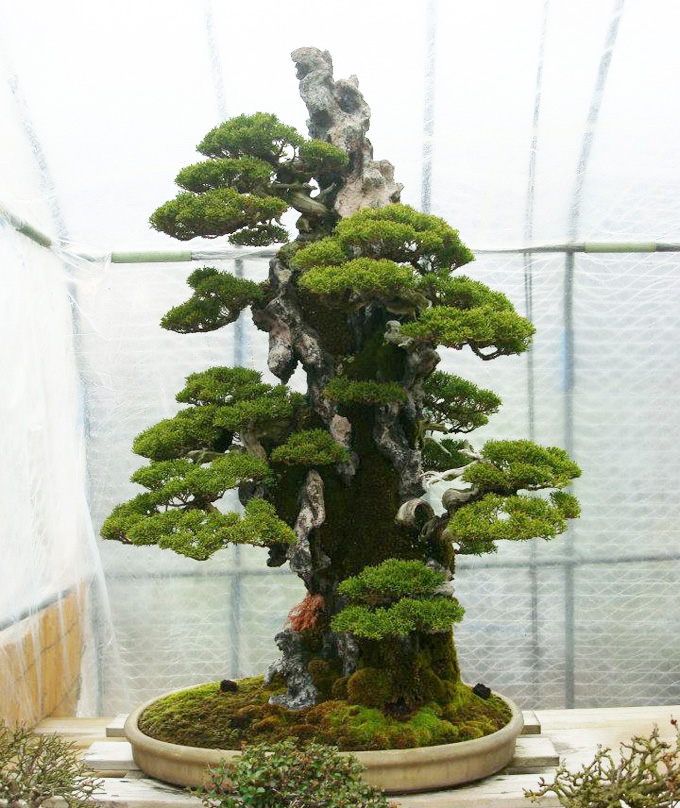 The mature look. It helps to start with well developed trees. I think most of us would be happy to have trees like these Shimpaku as single bonsai, let alone as parts of group plantings.
The mature look. It helps to start with well developed trees. I think most of us would be happy to have trees like these Shimpaku as single bonsai, let alone as parts of group plantings.
Kimura’s rock plantings. These photos are all from a facebook posting by Alejandro Sartori that he took during a recent visit to Masahiko Kimura’s nursery. I’ve chosen to pick out some rock plantings from a much larger selection of Alejandro’s photographs of Kimura’s trees. I think they represent an aspect of Kimura’s revolutionary bonsai journey that may not be as familiar as some of his other bonsai, particularly his famous dramatic large bonsai that he sculpted using chainsaws and other power tools.
I believe that the rocks in these photos were constructed by human hands. Quite possibly even by Kimura’s famous hands. There is a chapter in The Magician, the Bonsai Art of Kimura 2 that shows how to construct a layered vertical rock. The second photo down features one of these.
By the way, all of the plantings shown here are root-on-rock style as opposed to root-over-rock style.
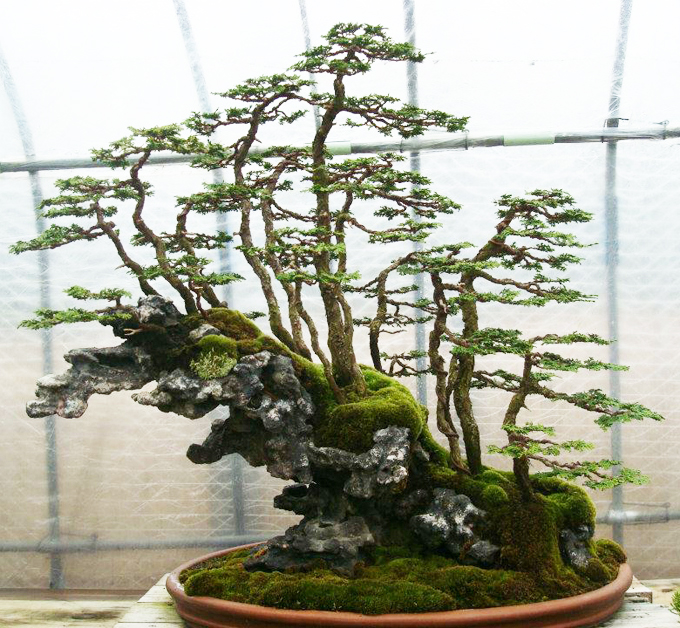 Are these trees Hinokis? It’s hard to tell for sure, but that’s my best guess. It’s also hard to tell the size of this planting without something to contrast it with, though you might imagine that it’s quite large. My guess is that the pot is somewhere around 30 inches (76cm), which would make the planting about 40 inches (100cm) across, but that’s just a guess.
Are these trees Hinokis? It’s hard to tell for sure, but that’s my best guess. It’s also hard to tell the size of this planting without something to contrast it with, though you might imagine that it’s quite large. My guess is that the pot is somewhere around 30 inches (76cm), which would make the planting about 40 inches (100cm) across, but that’s just a guess.
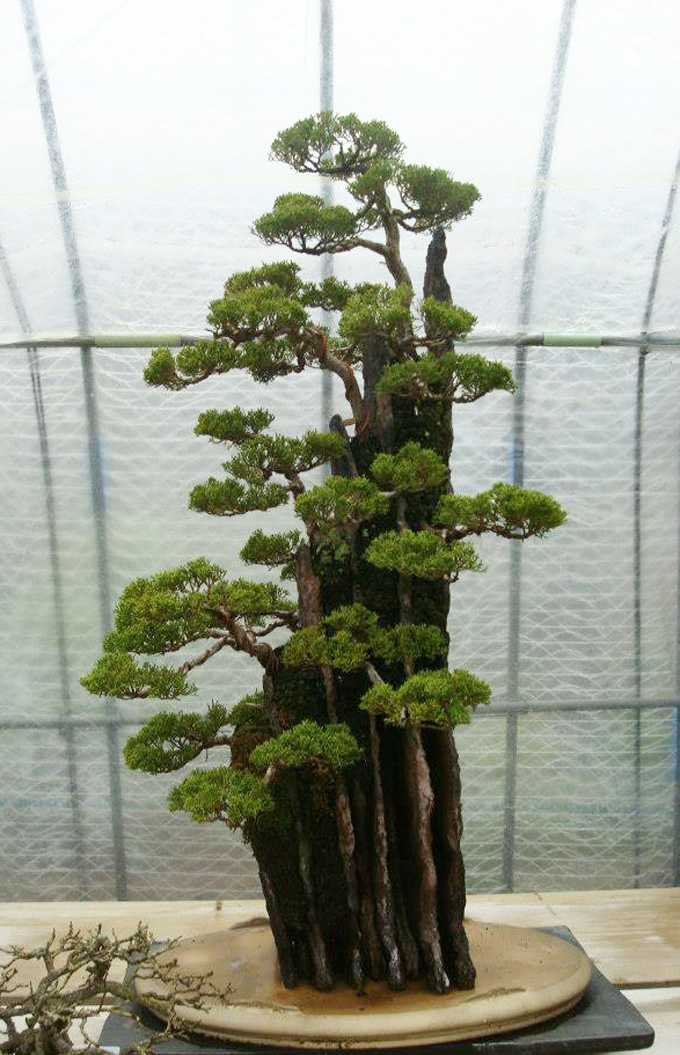 Another Shimpaku planting. The trees aren’t quite as developed in this one, but they’re still pretty good. It’s fairly easy to see that the rock was constructed in layers. There’s an excellent chapter in The Magician, the Bonsai Art of Kimura 2, where he shows how to do this.
Another Shimpaku planting. The trees aren’t quite as developed in this one, but they’re still pretty good. It’s fairly easy to see that the rock was constructed in layers. There’s an excellent chapter in The Magician, the Bonsai Art of Kimura 2, where he shows how to do this.
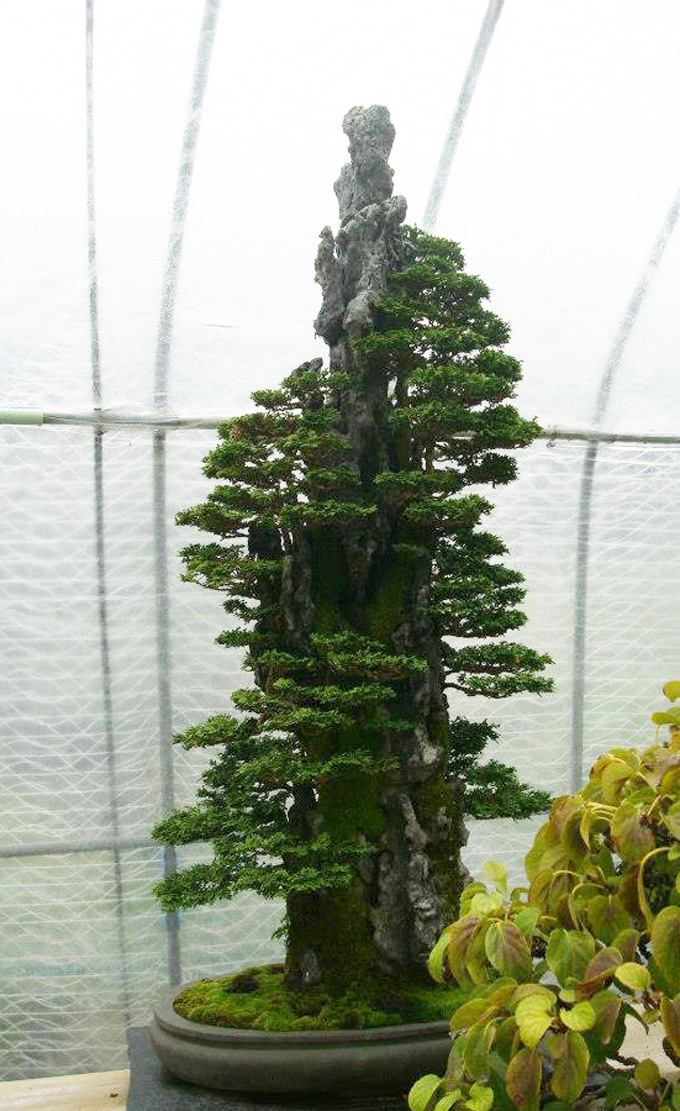 I like the way the trees (Hinokis again?) grow straight up along the side of rock on this one. This serves to help create a dynamic sense of vertical movement (something like that anyway). This is further enhanced by the way the crown of the rock reaches up to the sky.
I like the way the trees (Hinokis again?) grow straight up along the side of rock on this one. This serves to help create a dynamic sense of vertical movement (something like that anyway). This is further enhanced by the way the crown of the rock reaches up to the sky.
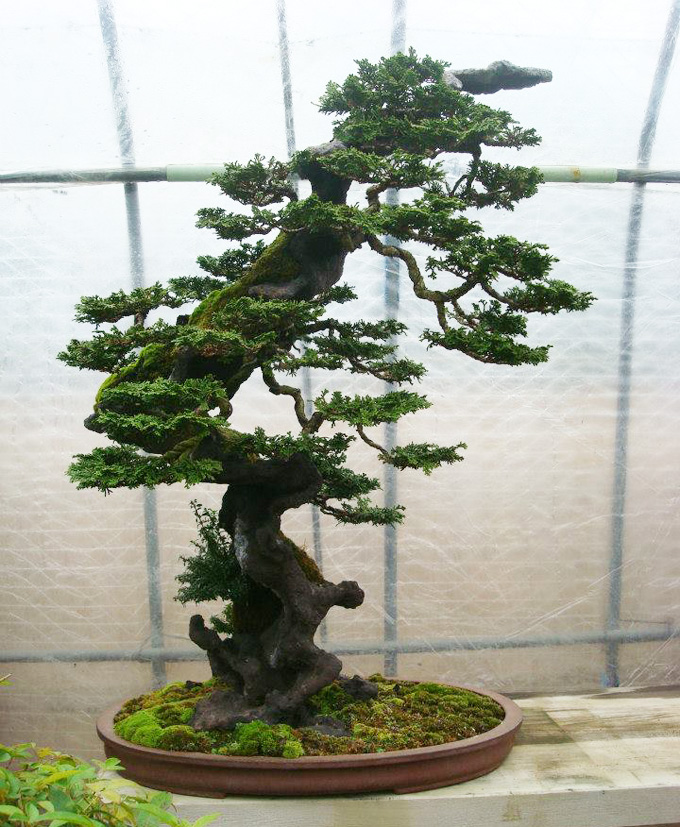 The eccentric. I think this one is the most unusual of the lot. Perhaps a big part of that unusual feel is the distinctive shape of the rock. In contrast to the planting immediately above, these trees (Hinokis again?) create a whole different feel by growing down and away from the rock.
The eccentric. I think this one is the most unusual of the lot. Perhaps a big part of that unusual feel is the distinctive shape of the rock. In contrast to the planting immediately above, these trees (Hinokis again?) create a whole different feel by growing down and away from the rock.
You’re right, Wayne, most people would love to have any one of those shimpaku as a single tree. But when you can get your hands on so many at such a low price (they’re two a penny in Japan) why not make something really wonderful with them. In cases like this, the (artistic) value whole is greater than the sum of the constituent parts….
I glad you have lightened his dark pictures…..they are amazing…I wish someone would post a list of gardens and nurseries and places we should visit to see these amazing specimens….in Japan and other parts of the world…..
Hi Sharon,
You noticed. There’s always some risk when you fiddle around on photoshop. What looks right on my monitor may not look so good on yours. Still, in the case, I agree, the darkness of the photos completely obliterated parts of stones and other pieces so a little extra light seemed to help do the trick.
Thanks Colin,
Yeah, two a penny, such a deal. The cruelty of it all is that, not only would they be mega expensive here, but difficult to find at all.
These are fantastic! Very original bonsai rock art! Imagine the rock in each planting to be a tree trunk rather than rock, and see the fantastic virtual single tree bonsai as well!!
Wayne, complete information on Kimura’s first rock planting can be found in Fine Bonsai, page 29. Also there are numerous other Kimura creations in the book. Page 240 and Page 287 feature rock plantings too, all with complete information.
Bill
Thanks Bill,
Yes. It’s truly a great book and what better place to show off some more of Kimura’s masterpieces.